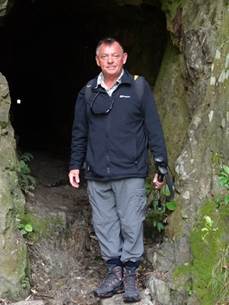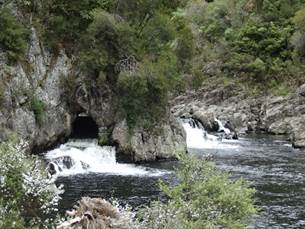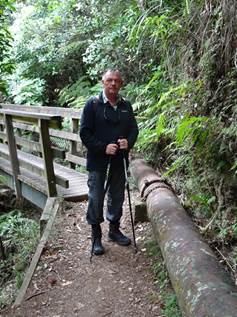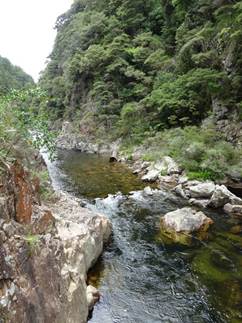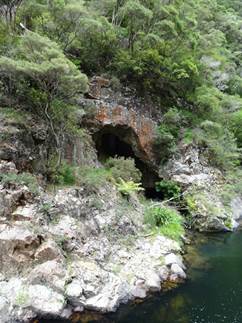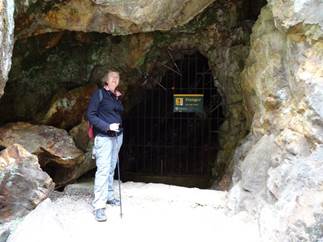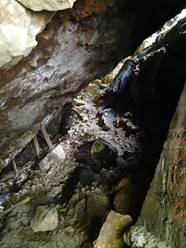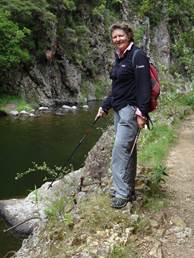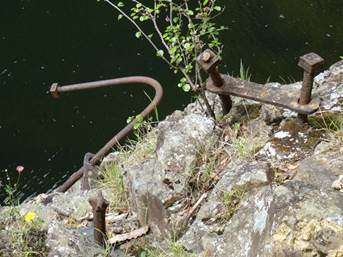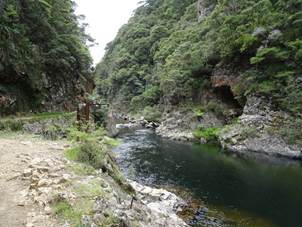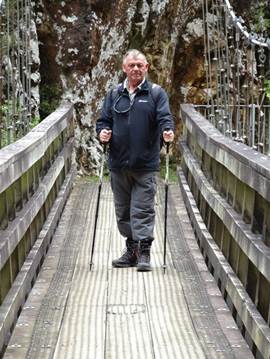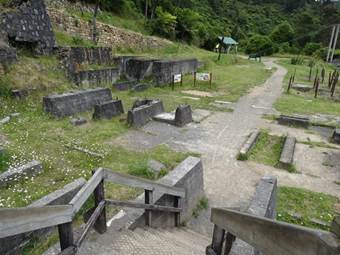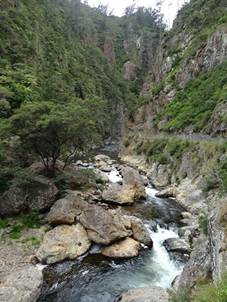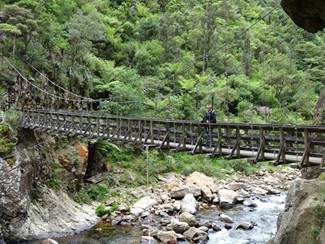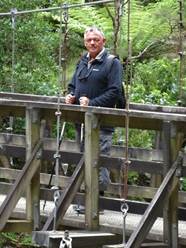Dickey Flat

There was a heritage walk, called the Crown Track to Karangahake, through the gorge of the same name, that you can do from here so we decided to stay another day. Called the Crown because it joins the historic Crown (a gold company) Tramway Track as it passes though the historic mining remains at Karangahake. About half a kilometre into the walk was a 180m tunnel that we had to walk through. You can just make out ‘ the light at the end of the tunnel’ in the RH picture. Now how many times can you say that and mean it?
These falls were at the other end of the tunnel, you can see a smaller carved one to the left. Lots of people come here to swim, bloody cold. Some sort of algae or lichen growing on the gorge walls opposite.
The mines workings were for gold and silver, this pipeline went from upstream all the way to the mine workings, and now provides the basis for the footpath we walked (and the tunnel we went through).
Between 1883 and 1920 kilometres of mine shafts were carved out in this area. This is the Crown mine and by the time thy finished mining in 1926 the main shaft was 824ft deep. The underground network started from the small mine entrance you can see in the right picture. There used to be a huge power plant and service buildings opposite the river in the left hand picture. Apparently, flooding was a major problem so they had to have big power house for that and the lifts etc.
This cave out housed another boiler for, or, something!
A tramway connected the Crown mines to the battery further down the river. You can see the old pins that held the tramway track.
The path certainly widened out here. Horse drawn trucks carted the material down to the Battery 2 km downstream. They returned with coal for the boilers in the power plant.
Paul braves it across a swinging suspension bridge.
Remains of the stamper batteries (gold recovery plants) at Karangahake. The gold here was difficult to extract so it was only the big companies that could afford to do so. The mines took on the names of the companies. There were three batteries in this are the Crown, Talisman and Woodstock. Between 1883 and 1933, the Crown and Talisman mines were the largest of their type in NZ. The Crown and Talisman mining companies, produced more than 4 million oz. of gold bullion.
A happy miner.
This was a return walk so after a cup of coffee at a little café it was back up the gorge.
And over the bridge.
Fortunately we got back about 2pm and it started to pour down with rain at 4pm and did not stop. |

